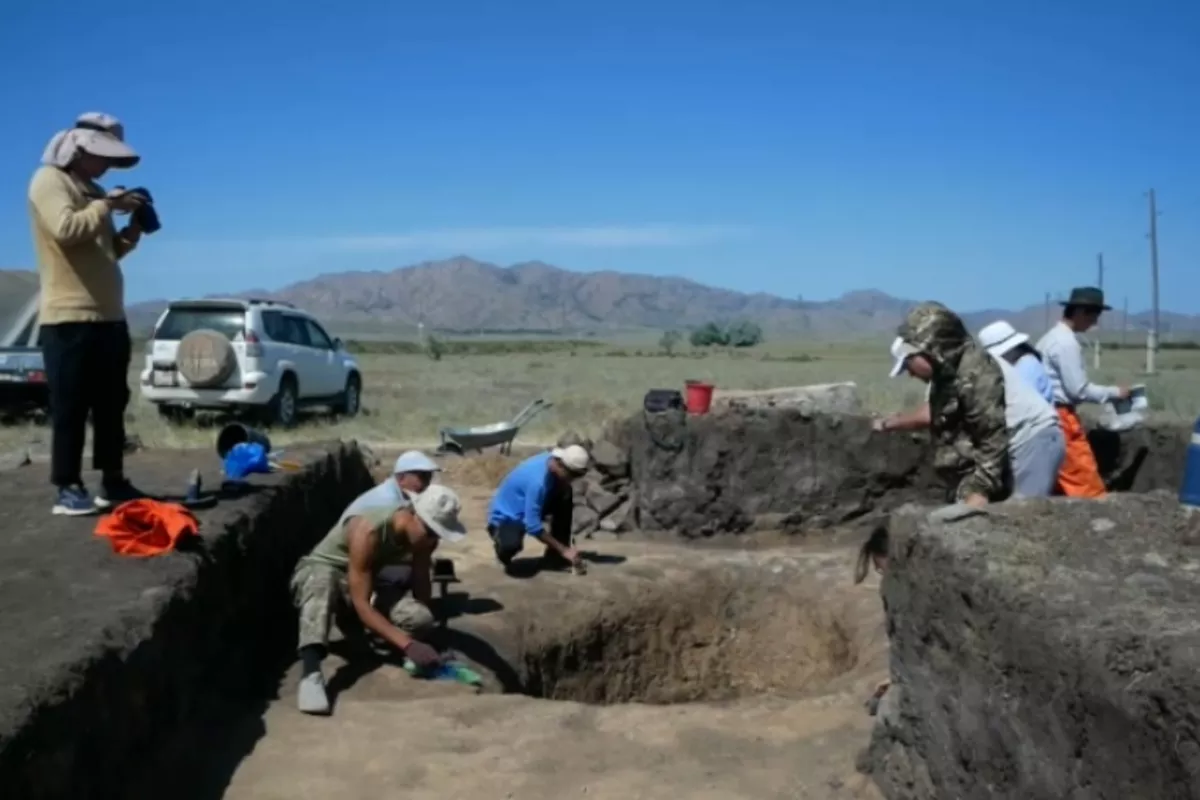
Photo credit: 24kz
Archaeological excavations in Kazakhstan continue to reveal valuable insights into the country’s past, with recent finds including medieval silver coins near Atyrau and the burial of a high-status Saka warrior in the Ulytau Region, The Caspian Post infroms via Astana Times.
Silver coins of the Golden Horde found near Atyrau
According to the Kazakh Ministry of Science and Higher Education, archaeologists from Atyrau University named after Khalel Dosmukhamedov uncovered medieval silver coins during excavations at the Aktobe-Laeti settlement near Atyrau. The coins date back to the reign of Mengu-Temir Khan, a ruler of the Golden Horde.
After examining the relief marks, Russian numismatist Pavel Petrov confirmed their historical value and dated them to the second half of the 13th century.
“One side of the coin depicts the tamga (emblem) of Mengu-Temir, and the other bears Chinese characters, likely linked to the political captivity of Nomukhan during conflicts between descendants of Kublai Khan and the Ulus of Chagatai,” said archaeologist Amangeldy Mugauly.
Mugauly also noted the discovery of a well-preserved clay vessel known as a tagara. Excavations this year are being conducted on behalf of the Atyrau Regional Center for the Study of Historical and Cultural Heritage.
“The entire 53-hectare area has been fully fenced. In the future, we plan to create an open-air museum here,” said the center’s head Tolybai Dostybaev.
History students from the university also participated in the excavations, and artifacts recovered from a 500-square-meter area will undergo laboratory analysis at the institution.
Saka warrior burial discovered in Ulytau
In the Ulytau Region, archaeologists uncovered the remains of a Saka warrior near the village of Ulytau. Specialists believe the burial dates to the Early Iron Age.
Gold items and weapons found alongside the remains suggest the warrior held a high social status.
“A gold item was found at the head of the burial. In addition, arrowheads lay near the right hip. These objects are characteristic of Saka burials. Based on them, we can determine the time period and burial tradition. The find is yet another proof that the land of Ulytau holds many traces of a great history,” said archaeologist Syrym Yesen.
The finding is part of broader archaeological work at seven historical sites in the region.
Share on social media